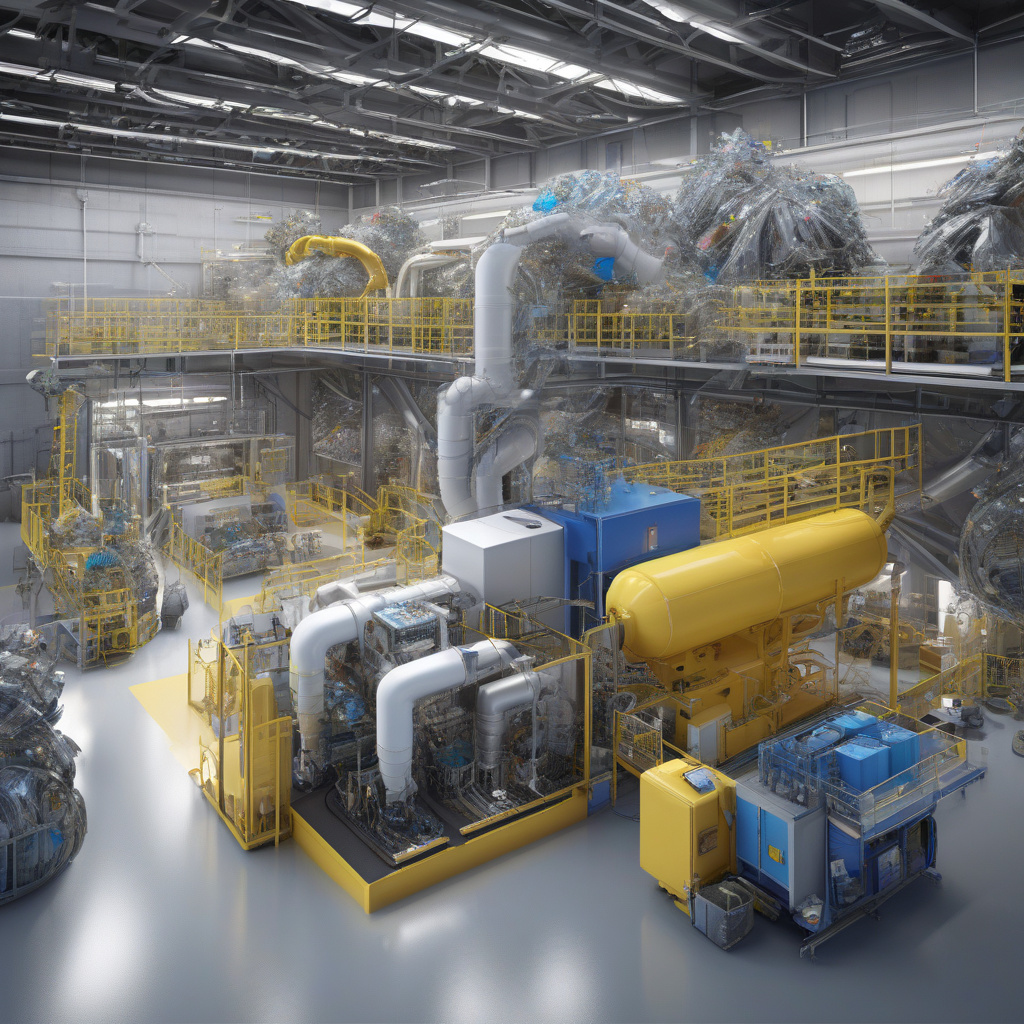WASTE2H2: Converting Plastic Waste into Clean Hydrogen and Carbon Materials
In a world faced with the growing challenges of plastic pollution and energy transition, innovative solutions are crucial. The emergence of technologies that can not only tackle the issue of plastic waste but also generate clean energy is a game-changer in the sustainability sector. One such groundbreaking technology making waves is WASTE2H2, which focuses on converting plastic waste into clean hydrogen and high-value carbon materials.
The process behind WASTE2H2 is a testament to human ingenuity and the power of innovation. By leveraging advanced thermal conversion techniques, this technology can efficiently break down plastic waste into its molecular components. Through a series of controlled processes, the plastic is transformed into hydrogen gas and valuable carbon materials. This dual-pronged approach not only helps in reducing the environmental impact of plastic waste but also produces resources that have significant industrial applications.
The implications of WASTE2H2 are far-reaching and hold immense promise for a sustainable future. Let’s delve into some key aspects that make this technology a game-changer in the quest for cleaner energy and waste management:
1. Clean Energy Generation: Hydrogen is hailed as a clean fuel of the future due to its high energy content and zero emissions when used in fuel cells. By producing hydrogen from plastic waste, WASTE2H2 contributes to decarbonizing the energy sector and reducing reliance on fossil fuels. This aligns perfectly with global efforts to transition towards renewable and eco-friendly energy sources.
2. Circular Economy: WASTE2H2 exemplifies the principles of a circular economy by closing the loop on plastic waste. Instead of letting plastic litter our oceans and landfills, this technology gives it a new life as valuable resources. By reusing plastic in a sustainable manner, WASTE2H2 promotes resource efficiency and minimizes the need for virgin materials, thus reducing the overall environmental footprint.
3. High-Value Carbon Materials: Apart from hydrogen, WASTE2H2 also yields high-value carbon materials that find applications in various industries. These carbon materials can be used in manufacturing processes, construction materials, or even as a feedstock for further chemical processes. By creating a market for these carbon materials, WASTE2H2 adds economic value to the waste stream, making recycling more economically viable.
The significance of WASTE2H2 extends beyond just environmental and economic benefits. It represents a paradigm shift in how we perceive and manage plastic waste, turning a pressing environmental concern into a valuable resource. As the world grapples with the consequences of plastic pollution and seeks cleaner energy alternatives, technologies like WASTE2H2 offer a ray of hope and a tangible solution.
In conclusion, WASTE2H2 stands as a prime example of innovation driving sustainability. By converting plastic waste into clean hydrogen and high-value carbon materials, this technology paves the way for a greener, more efficient future. As we witness the transformative potential of such advancements, it becomes clear that a circular, sustainable economy is not just a vision but an achievable reality.
The post on WASTE2H2 by Innovation News Network sheds light on the immense possibilities this technology holds, inspiring us to rethink our approach to waste management and energy production. With WASTE2H2 leading the charge, the journey towards a cleaner, more sustainable world gains momentum.
#sustainability, #cleanenergy, #plasticwaste, #innovation, #circulareconomy












